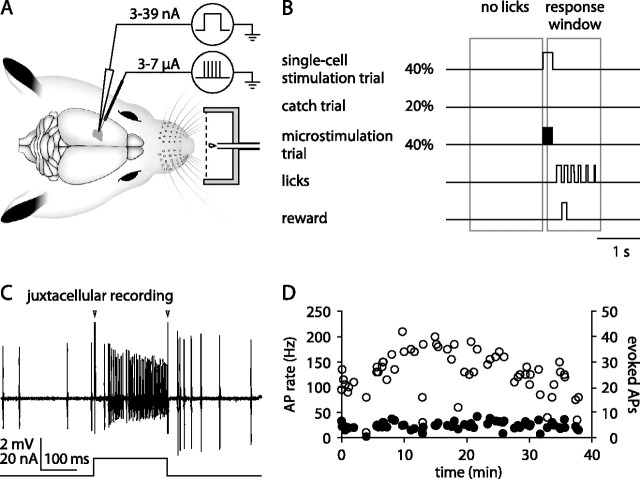Figure 1.
Juxtacellular single-cell stimulation in VPM thalamus. A, Behavioral setup. Awake head-fixed animals were trained to report electrical stimulation applied to VPM through a tungsten microelectrode. Animals were rewarded with a drop of sugar water if they interrupted a light beam (dashed line) by licking in response to stimulation. During single-cell stimulation experiments, a glass pipette was used to stimulate a single thalamic neuron close to the microstimulation site. B, Single-cell stimulation detection task. Juxtacellular single-cell stimulation (40% probability), microstimulation (40%), and catch trials without current injection (20%) were presented in a random order (Poisson process; mean, 3 s). If the first of usually multiple tongue licks occurred during the response window (0.1–1.2 s after stimulus onset), the animal was rewarded. Licks before stimulus presentation were mildly punished with an additional delay of 1.5 s to the next stimulus presentation. C, Single-cell stimulation trial. Top trace, Juxtacellular recording of APs. Arrowheads mark stimulation onset and offset artifacts. Bottom trace, Current injection waveform. D, Spontaneous (filled circles) and evoked (open circles) APs during a 38-min-long single-cell stimulation experiment. Spontaneous firing rates were quantified during a 1 s period before each stimulation. APs during 200 ms current injections are indicated as both a rate (left y-axis) and a number (right y-axis). This cell had a single-whisker receptive field corresponding to whisker C4 according to mapping with a hand-held probe.

